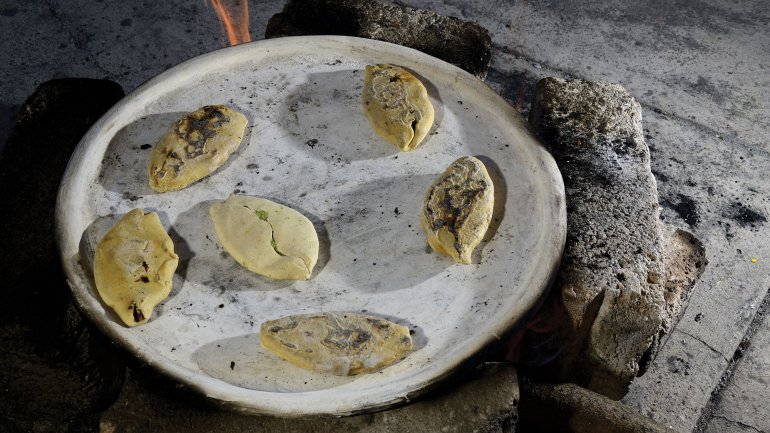Kitchen Heirlooms: Neftalí Durán
Kitchen Heirlooms: Neftalí Durán
Last fall, American Craft introduced Object Stories, a series of pieces written by members of the craft community on the handmade objects that they cherish. In the upcoming Kitchen Table issue, we invited members of the craft and culinary communities to share stories about pieces from their kitchens and dining rooms that hold meaning to them, many of which were passed down by other generations of cooks or makers. Each story demonstrates how the objects we cook with and eat from carry vital personal, familial, and cultural history and invites readers to compliment the kitchen heirlooms in their own lives.
Story 3 of 7: Neftalí Durán on the traditions kept alive through his comal
The first memories of my grandma Rosenda are in her kitchen, and my first memory of food is eating a warm tortilla that abuela Rosenda handed me, a tortilla that had just puffed on top of a clay comal. If I close my eyes, I can smell the smoke in the air, and I can feel the warmth of the fire and abuela’s rough hands touching mine – rough from a lifetime of herding goats, splitting wood, and planting corn, with fingertips long calloused from touching the comal to flip the tortillas.
The clay comal is a multi-purpose cooking vessel you can use to make tortillas, roast tomatoes and chiles, and prepare all the necessary ingredients for a fresh salsa. A well-seasoned comal acts as the original Teflon cooking surface: You can drop an egg on it, and it won’t stick.


A clay comal can be used over hot coals to prepare a variety of foods, including tortillas.
Photos: Courtesy of Neftalí Durán
Even though I didn’t know it at the time, abuela’s kitchen held the history of my people through food and objects. Countless generations of women in my family carry on the tradition of cooking on a comal fueled by fire, but if I really think about it, I realize this act is a lot more than just cooking. It is 10,000 years of Indigenous innovation: domesticating corn from a wild grass, developing the nixtamalization method (which enabled humans to digest and gain nutrients from corn), and developing arts and crafts for the purpose of culinary traditions – none more important than clay vessels.
Even though I didn’t know it at the time, abuela’s kitchen held the history of my people through food and objects.
One of my prized possessions is a comal gifted to me by my mentor Zarela Martinez. Having survived travel and conferences, my comal sits on top of my fridge wrapped delicately in cloth most of the time, awaiting the opportunity of an open fire to continue the timeless conversation between fire, clay, and corn.
Neftalí Durán is a chef, advocate, and educator originally from Oaxaca, Mexico, who is interested in documenting Oaxacan culinary traditions, reclaiming cultures of the original peoples of the Americas, and conversing about the impact of colonialism on communities regarding traditional foodways. He is the founder of I-Collective, an autonomous group of Indigenous chefs, activists, herbalists, and seed and knowledge keepers. @neftaliduran_ @icollective2019_
Thoughts on this story?
We'd love to hear from you. Send your reactions, reflections, questions, and concerns to [email protected].
Help us share impactful stories like this one
Become an American Craft Council member and support nonprofit craft publishing. You will not only receive our magazine but also help grow the number of lives craft has touched.

